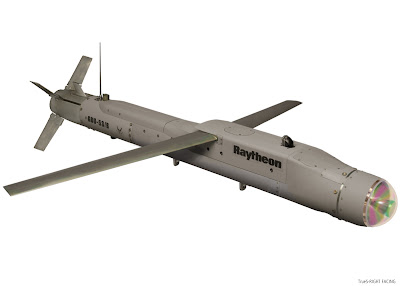
Bad weather and the cover of darkness are no longer obstacles for the warfighter.
Raytheon has developed a tri-mode seeker that fuses millimeter-wave radar, uncooled IIR and digital semi-active laser sensors on a single gimbal. The result is a powerful, integrated seeker that seamlessly shares targeting information between all three modes, enabling weapons to engage fixed, relocatable or moving targets around the clock in adverse weather conditions.
Raytheon’s uncooled tri-mode seeker, common to both the Air Force and
Department of the Navy’s Small Diameter Bomb II (SDB II) program and the Raytheon Boeing solution to the Joint Air-to-Ground Missile competition,combines capability with the lowest total cost of ownership. By eliminating unnecessary and potentially troublesome cryogenic cooling, the warfighter gets a weapon with improved reliability and reduced life-cycle cost.
Recently, Raytheon built the fifth Small Diameter Bomb II seeker in its new factory expressly designed to assemble integrated tri-mode seekers.
“Raytheon is the only company building integrated tri-mode seekers on a ‘hot’ production line and we’re doing it in less than a year after contract award,” said Harry Schulte, vice president of Raytheon Air Warfare Systems. “Producing seekers in an active factory is one of the reasons Raytheon can keep its commitment to deliver SDB II to the warfighter on cost and on schedule.”
No comments:
Post a Comment